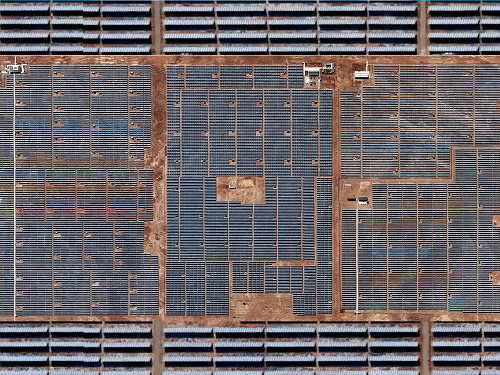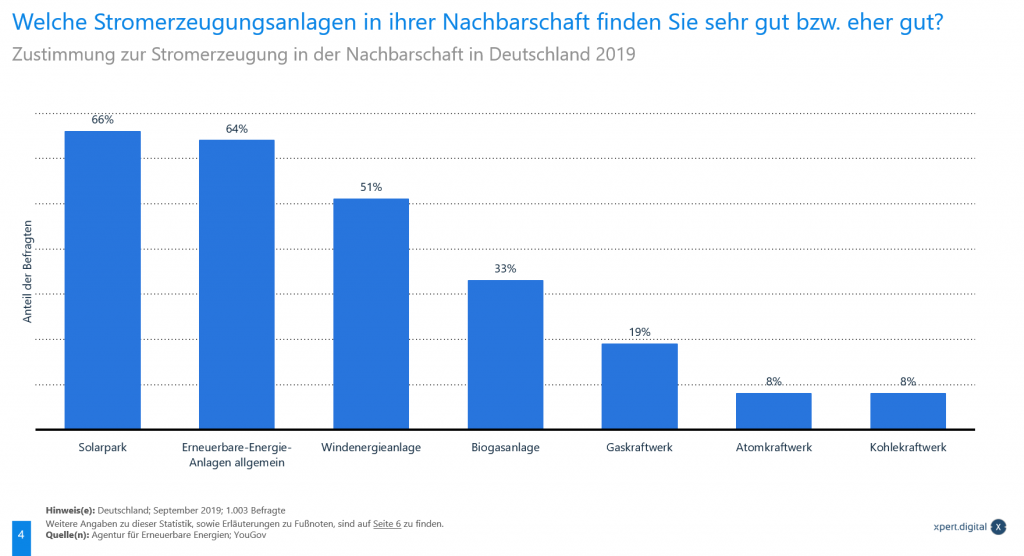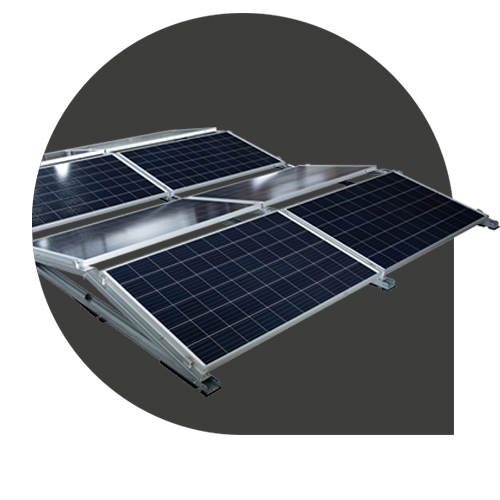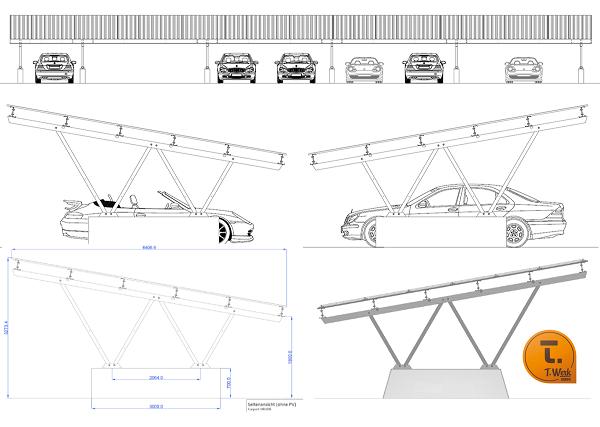In 2005, the Bavaria solar park was the largest solar park in the world with 10 megawatts (MW). In 2006, it was replaced by the Erlasee solar field with 14 MW by 2008. In 2009, the Waldpolenz solar park was “only” the second largest plant worldwide with 52 MW.
The title “largest solar park in the world” is a rather short-lived award. For a period in 2014, Topaz Solar Farm in California topped the list with its 550 MW facility. In 2015, another operation in California, Solar Star, increased its capacity to 579 MW. In 2016, India’s Kamuthi solar power project in Tamil Nadu was ahead with a capacity of 648 MW.
As of December 2015, the largest solar park in Europe was the Cestas solar park in France, which has a capacity of 300 MW. It covers an area of 2.5 square kilometers. But even that is now obsolete. The largest solar plant in Europe, with 500 MW, is now located in the Núñez de Balboa solar park, Spain. It was built within a year. 1,430,000 PV modules, with 115 inverters and 2 substations in total, were installed on an area of 1,000 hectares.
In Morocco, the Federal Republic is contributing 0.83 billion (38%) to the 2.7 billion euro Noor solar park (northeast of the city of Ouarzazate). While Noor I to III are equipped with parabolic troughs, Noor IV will consist of photovoltaic modules with a capacity of up to 70 MW.
In February 2017, the Longyangxia Dam Solar Park in China was the new frontrunner with a capacity of 850 MW. By January 5, 2017, solar panels covered 27 square kilometers of Qinghai province. Reportedly, there were nearly 4 million solar panels on site in 2017. The rapid expansion in Longyangxia coincides with China’s fast-growing solar energy sector. In 2016, China’s total installed capacity doubled to 77 gigawatts. A project planned for the Ningxia region in northwest China will have a capacity of 2000 MW when completed.
A solar power plant was built near the Egyptian city of Aswan in 2018/2019, the Benban Solar Park. While it was still under construction, it was announced that it would become the largest solar power plant in the world with 1650 MW. However, during its construction, Benban was overtaken in terms of output by the Bhadla Solar Park in the Indian state of Rajasthan, which reached 1800 MW in 2019.
In 2019, the Pavagada solar farm in the southern Indian state of Karnataka was among the most powerful: As of April 2019, it had a capacity of 1400 MW. However, as early as December 2019, it became the largest solar park in the world, with 2050 MW.
In March 2020, its output was again surpassed by the completed Bhadla Solar Park, which became the world’s largest at 2245 MW.
In Dubai (United Arab Emirates), construction of the Mohammed bin Rashid Al Maktoum Solar Park was started: The first expansion stage with 13 MW in fall 2013, another expansion stage with 200 MW in spring 2015. In the third expansion stage, which was put out to tender in mid-2016, it will reach a capacity of 800 MW. In total, the solar park is to be expanded to a capacity of 5000 MW.
In Ladakh (India), the “world’s largest” PV power plant with 5000 MW is also to be built and completed in 2023.
But there’s more: Saudi Arabia planned to build the world’s largest solar park by 2030 in 2018. It was to supply the country (34 million inhabitants) completely with solar energy. 172 billion has been budgeted for this. The project was put on hold again that same year. Currently, there is a letter of intent for the Al Faisaliah Solar Project with a total capacity of 2600 MW.
Overview of the largest solar parks and development
The list makes no claim to completeness
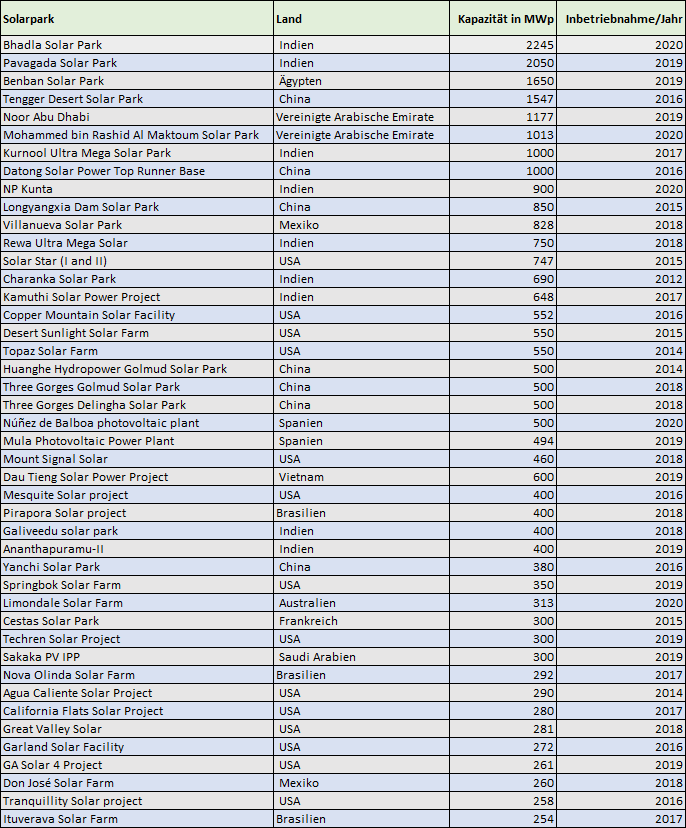
Overview solar parks worldwide – Image: @xpert.digital
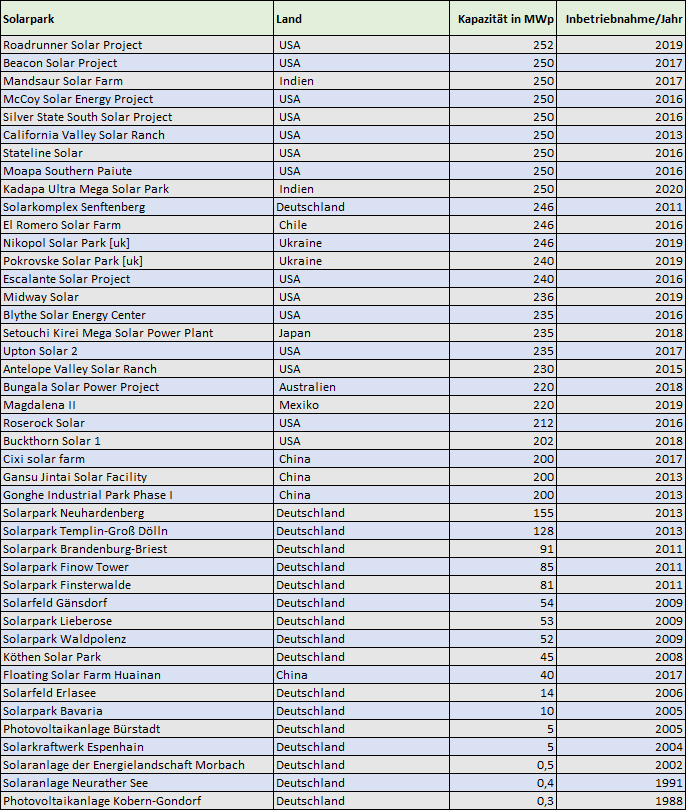
2. overview solar parks worldwide – image: @xpert.digital
Also interesting:
Which power generation facilities in your neighborhood do you think are very good or somewhat good?
The statistics show the result of a survey on the acceptance of power generation plants in the vicinity of one’s home. In September 2019, 66 percent of respondents said they would like very much or somewhat a solar farm in their neighborhood.
